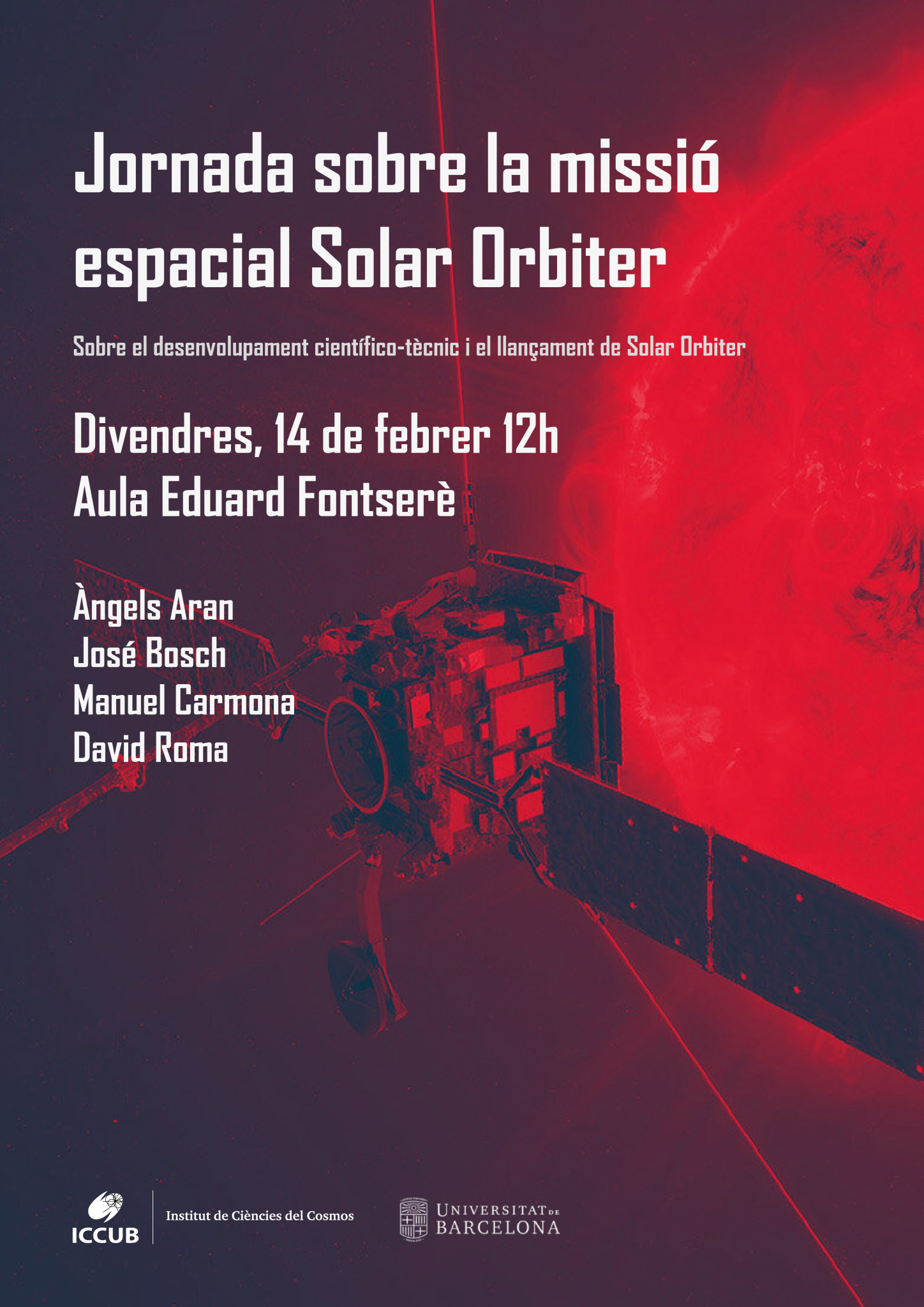Science talk about the Solar Orbiter successful launch

A public talk about the Solar Orbiter, as well as the contribution of members of the Institute of Space Studies of Catalonia (Institut d’Estudis Espacials de Catalunya – IEEC) at the Institute of Cosmos Sciences (ICC, UB) to the mission, is scheduled for Friday, 14 February 2020, at 12:00. The event is set to take place at Aula Eduard Fontseré, Physics Faculty, University of Barcelona.
The conference is addressed to those grad and master students who might be interested in learning more about the science and engineering behind the mission. Four ICC researchers will participate. Researcher Àngels Aran, who will be in Cape Canaveral (USA) following the launch of the mission, will talk about the different steps of the mission development process. Researchers José Bosch (UB), Manuel Carmona (UB) and David Roma (IEEC) will explain the technical parts of the missions different instruments, in which they worked for several years.
The Solar Orbiter mission will address big questions in Solar System science to help us understand how our star creates and controls the giant bubble of plasma that surrounds the whole Solar System and influences the planets within it; the so-called heliosphere. It is an ESA mission with strong NASA participation.
The ICC team has been working on the Polarimetric and Helioseismic Imager instrument (SO/PHI) that the Solar Orbiter mission will carry onboard. The ICC’s responsibility is the development and implementation of an Image Stabilization System (ISS) that includes a camera, a controller for a piezo-electric based Tip-Tilt mirror, and the control firmware for the FPGA that controls the whole system. The ISS has been optimized minimizing the power consumption while reaching the required performance. The system is presently at TRL-8.
Apart from this, researchers from the Heliospheric Physics and Space Weather group are developing models to predict the harsh radiation environment that Solar Orbiter will encounter, and tools to facilitate the analysis of the particle measurements that it will gather.
